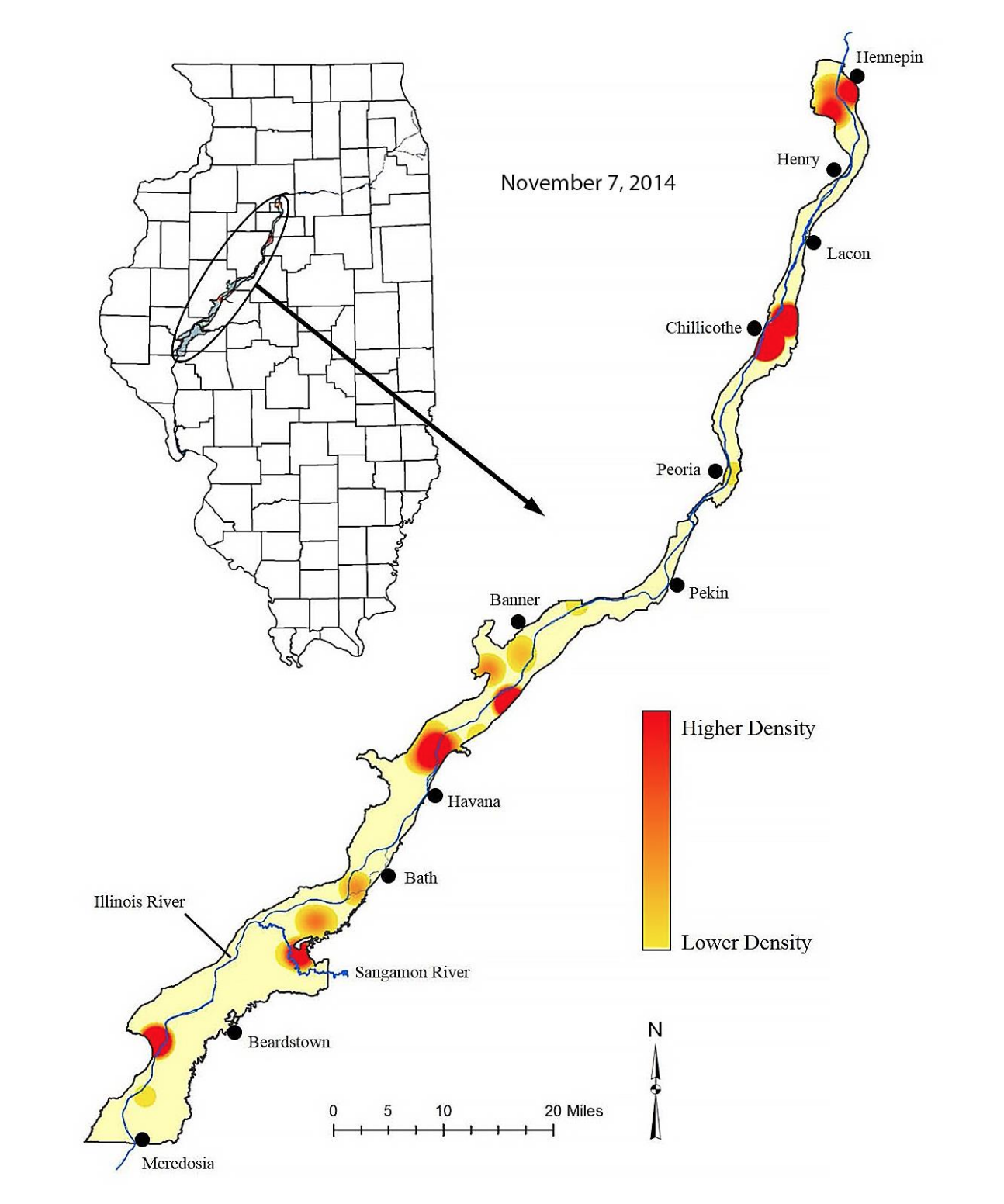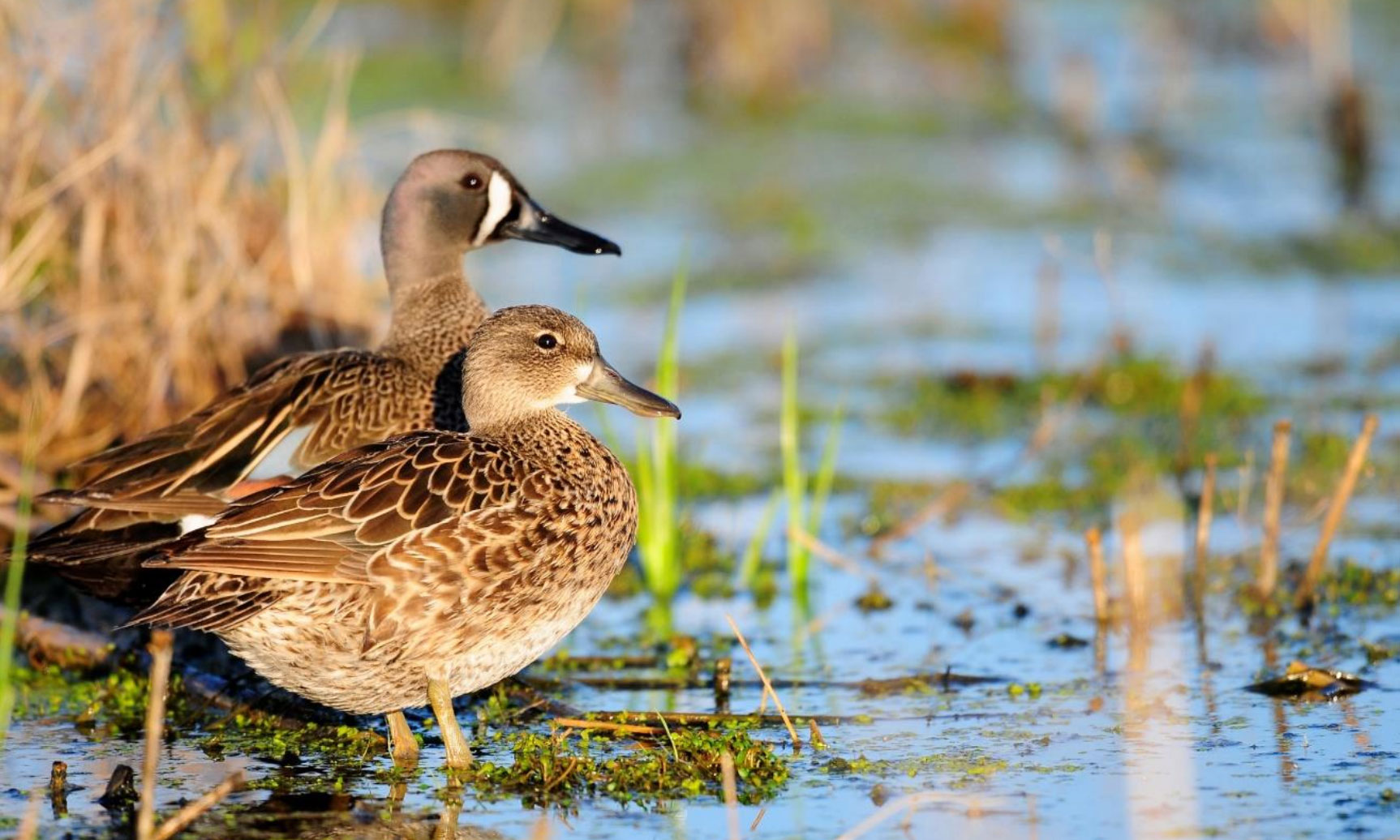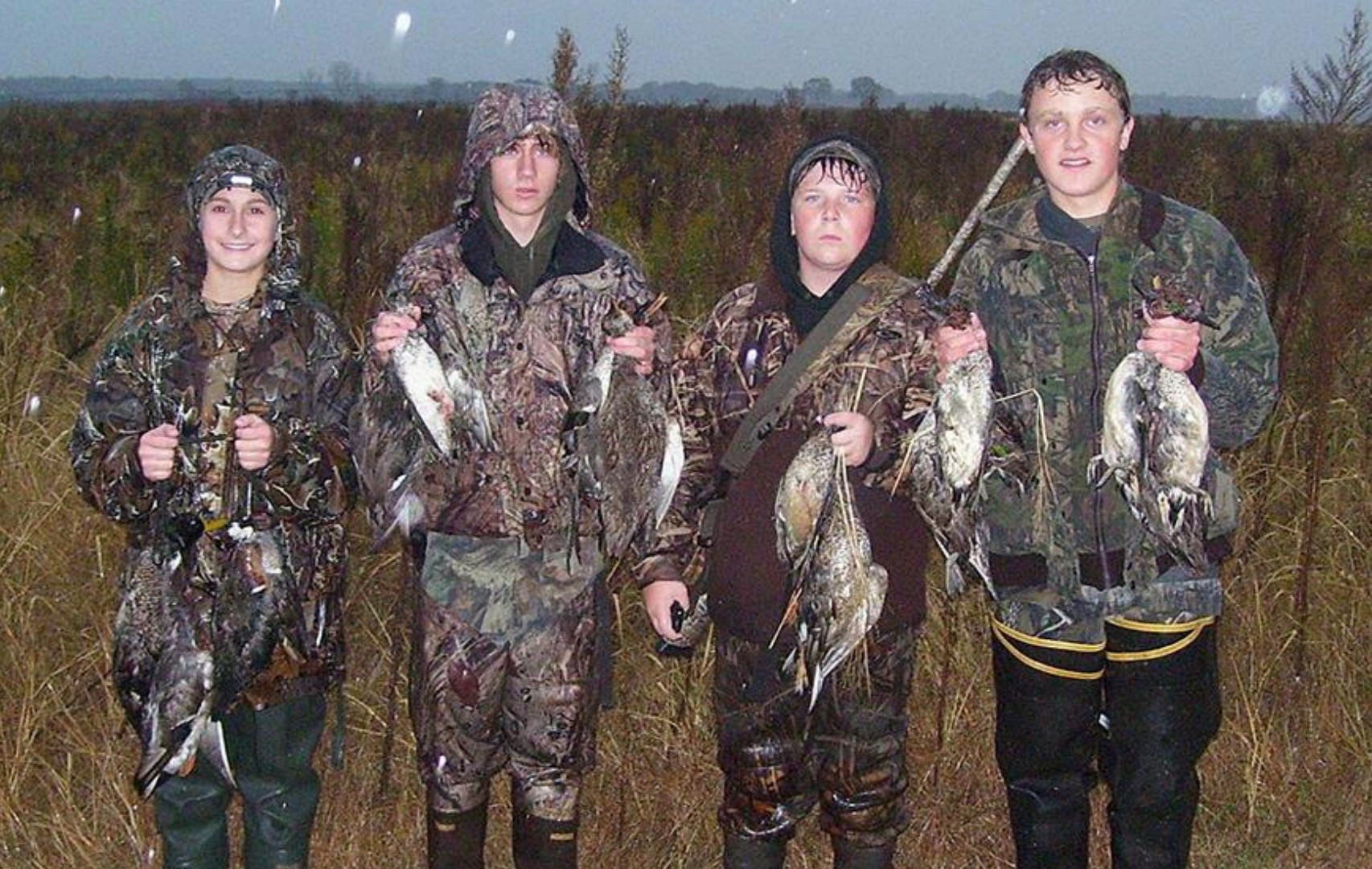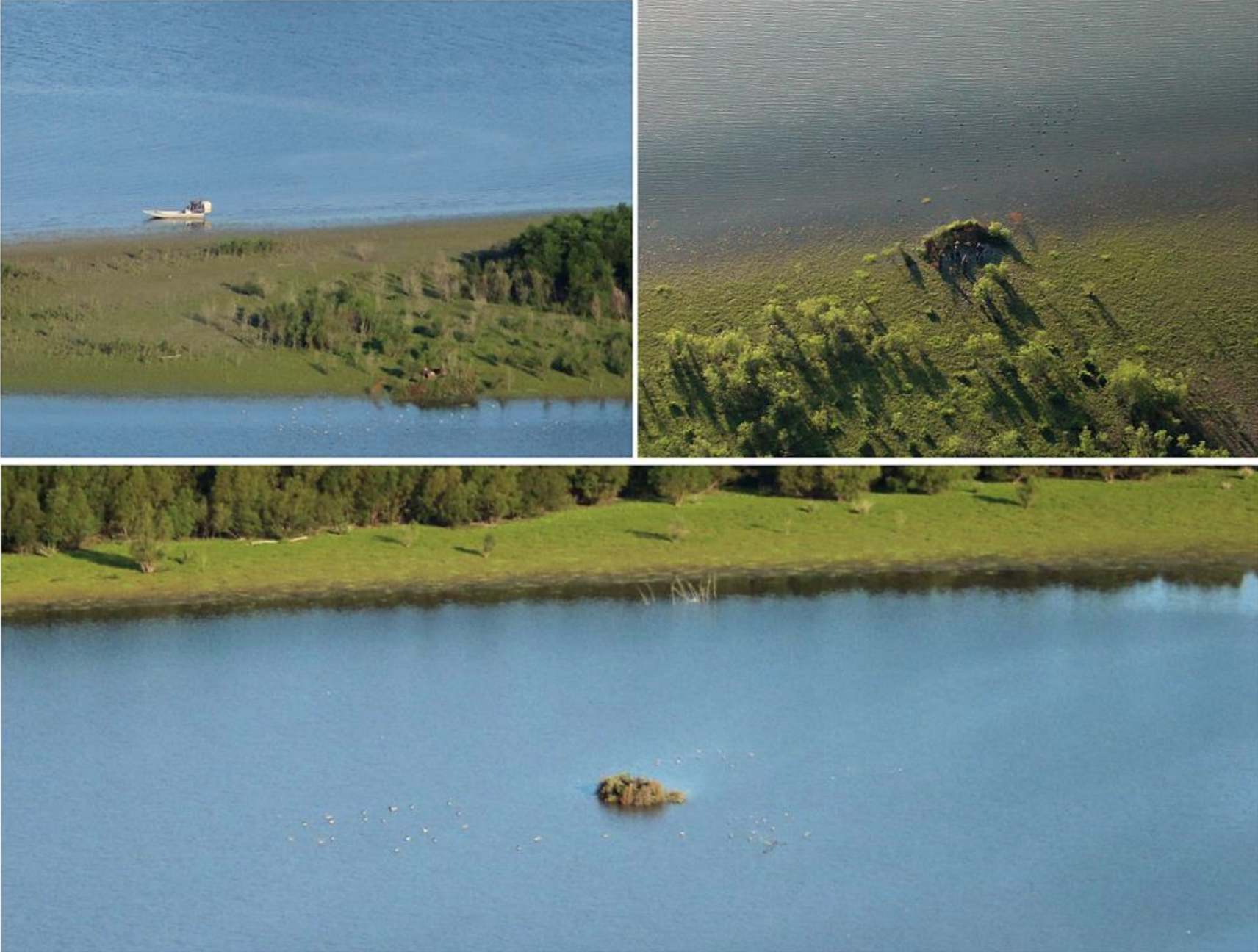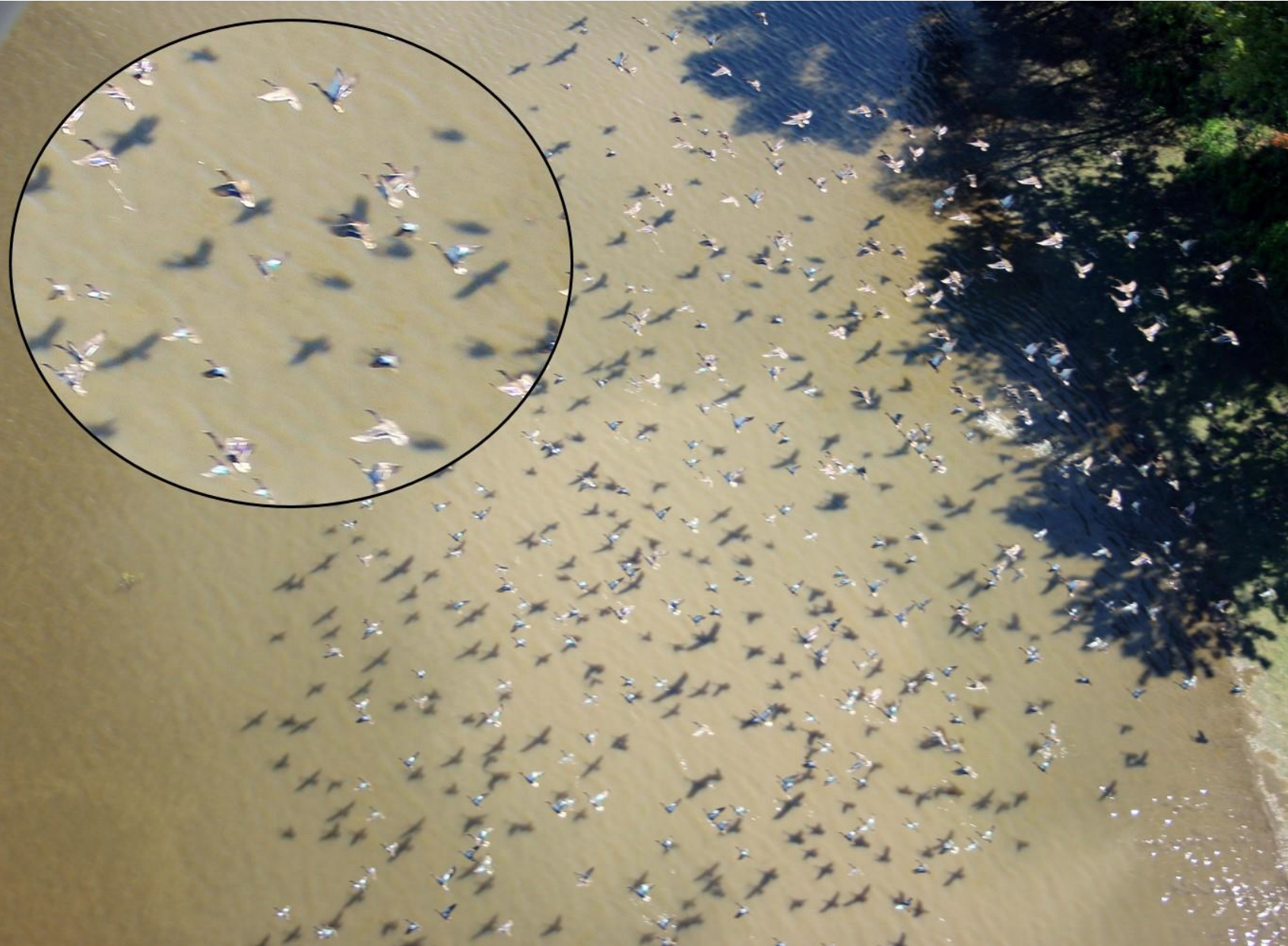The cold weather and north winds that passed through the prairies and Illinois during the weekend of October 9–11 brought some migrant waterfowl. Duck numbers in the Illinois River valley (IRV) jumped to 204,035 birds which was 32% above average for this time of year. The vast majority (77%) of these birds were non-mallard dabbling ducks comprised of pintail, shoveler, gadwall, wigeon, and green-winged teal. However, the ducks were not evenly distributed in the IRV; 43% were found within 9 miles of Havana at the Emiquon complex and Chautauqua NWR. Waterfowl abundance was 70% above average along the Mississippi River and estimated at 166,350 ducks. Like the Illinois, 76% of the total numbers were attributed to those non-mallard dabblers. Interestingly, we observed a record number (28,295) of ruddy ducks this week along the Mississippi. One impressive raft of ruddy ducks was observed between Nauvoo and Hamilton, IL. This weekend (October 24th) marks the duck season opener in the central zone of Illinois. Hopefully, the above average numbers of ducks will lend to some quality recreation for our central zone hunters. Good luck and be safe out there!
Just a reminder—we’ve started our second year of “grid” surveys along the Illinois River so you may see the survey plane two days each week this fall. The Illinois Natural History Survey and Illinois Department of Natural Resources are evaluating this experimental waterfowl “grid” survey (1-mi2 plots) from Hennepin to Meredosia. The new grid survey will allow us to determine the detection probability of observing ducks from the airplane; which in turn will allow us to determine confidence intervals about our estimates of waterfowl in the IRV. We will also be able to generate “thunderstorm” maps from the data yielding a visual perspective of where the ducks are in the Illinois Valley. For this reason, you may see us flying in locations outside the 23 refuges of the traditional waterfowl survey. Please be patient with us as we embark on this new survey design.
Stay tuned for more updates next week…
